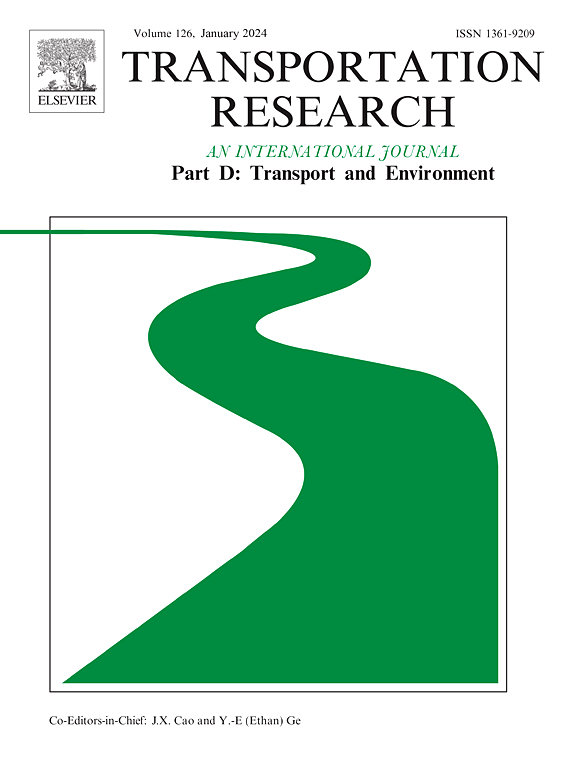如何利用生命周期评价方法计算地下物流系统的CO2排放量和减排效果
IF 7.3
1区 工程技术
Q1 ENVIRONMENTAL STUDIES
Transportation Research Part D-transport and Environment
Pub Date : 2025-05-26
DOI:10.1016/j.trd.2025.104832
引用次数: 0
摘要
量化二氧化碳排放量和地下物流系统(ULS)的减排效率对于实现碳中和城市至关重要。建立了基于生命周期评价和系统动力学的定量模型,并以武汉市为例进行了验证。结果表明:(1)所构建的模型能够计算出建筑材料生产阶段的CO2排放量,并表明四个阶段中CO2排放量最大的是建筑材料生产阶段;此外,该系统各阶段的运作均显示出减少二氧化碳排放的潜力;(ii) ULS生命周期CO2减排量与ULS规模、ULS承运人能耗呈负相关,与ULS货运量呈正相关。这些研究结果为我们在城市交通领域开展城市物流脱碳和实现碳中和的研究提供了理论支持和数据参考。本文章由计算机程序翻译,如有差异,请以英文原文为准。
How to calculate CO2 emissions and emission reduction effectiveness of underground logistics systems using the life cycle assessment
Quantifying CO2 emissions and the reduction efficiency of an underground logistics system (ULS) is crucial for achieving a carbon–neutral city. We constructed a quantitative model based on the life cycle assessment and system dynamics, and verified it using a case study in Wuhan City. The results show that: (i) The constructed model can calculate the CO2 emissions of the ULS, and demonstrated that the largest CO2 emissions of the four stages are building material production; further, the stages of ULS operation demonstrate CO2 emission reduction potential; (ii) the life cycle CO2 emission reduction of ULS is negatively correlated with the size of the ULS and energy consumption of ULS carriers, and positively correlated with the freight volume of ULS. These findings provide theoretical support and data reference for our study of urban logistics decarbonization and achieving carbon neutrality in the fields of urban transportation.
求助全文
通过发布文献求助,成功后即可免费获取论文全文。
去求助
来源期刊
CiteScore
14.40
自引率
9.20%
发文量
314
审稿时长
39 days
期刊介绍:
Transportation Research Part D: Transport and Environment focuses on original research exploring the environmental impacts of transportation, policy responses to these impacts, and their implications for transportation system design, planning, and management. The journal comprehensively covers the interaction between transportation and the environment, ranging from local effects on specific geographical areas to global implications such as natural resource depletion and atmospheric pollution.
We welcome research papers across all transportation modes, including maritime, air, and land transportation, assessing their environmental impacts broadly. Papers addressing both mobile aspects and transportation infrastructure are considered. The journal prioritizes empirical findings and policy responses of regulatory, planning, technical, or fiscal nature. Articles are policy-driven, accessible, and applicable to readers from diverse disciplines, emphasizing relevance and practicality. We encourage interdisciplinary submissions and welcome contributions from economically developing and advanced countries alike, reflecting our international orientation.

 求助内容:
求助内容: 应助结果提醒方式:
应助结果提醒方式:


